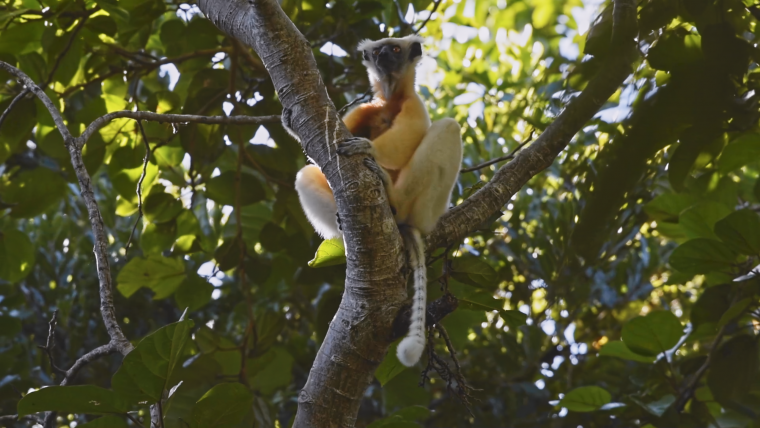
Fruit cocktails, tanning, and stink bombs: welcome to a lemur’s life
In a small country with a big name dwell countless fantastical beasts. Chief among the creatures of Madagascar is the spunky lemur. Bright-eyed and bushy-tailed, lemurs are native only to the island. Over 100 known species and subspecies live here, from woolly indri lemurs to aye-ayes, all marked by their own quirks and differences. Male ring-tailed lemurs, for example, lace their tails with strong body scents from their glands and ‘throw’ stink bombs at one another.
Soaring quietly from tree to tree like spooky phantoms, lemurs are aptly named from the Latin word for ghost or spectre. But like any self-respecting islander, lemurs worship the sun in the daytime. Troops of critters will seek out forest clearings and position themselves beneath the rays, tummy first with arms and legs outstretched so as to bake evenly. Their fur is thinner on their undersides, so these tanning sessions warm them up before they mosey back under the cool canopies to forage.
Lemurs love to dine on fruit, bark, and nectar found in flowers. One species, the black-and-white ruffed lemur, holds the unofficial title of ‘world’s largest pollinator’. As they stick their fuzzy faces into the trumpets of large blooms, pollen clings to their fur. This ensures a one-way ticket to the next plant and the floral species’ continued survival. If only all our snacking came with such a noble purpose.
Living on an island may seem to spell out paradise, but lemurs are endangered. Illegal logging of rainforests, charcoal production, and mining are destroying their home. Organisations like the Lemur Conservation Foundation and Duke Lemur Centre are hard at work to secure the fate of Madagascar’s most iconic animals. There is hope yet that these creatures will continue to munch on fruit and sunbathe for generations to come.






























Please sign in to leave a comment